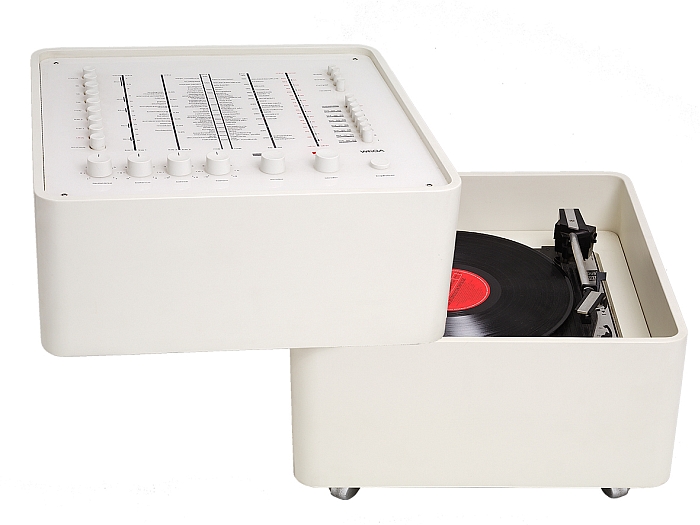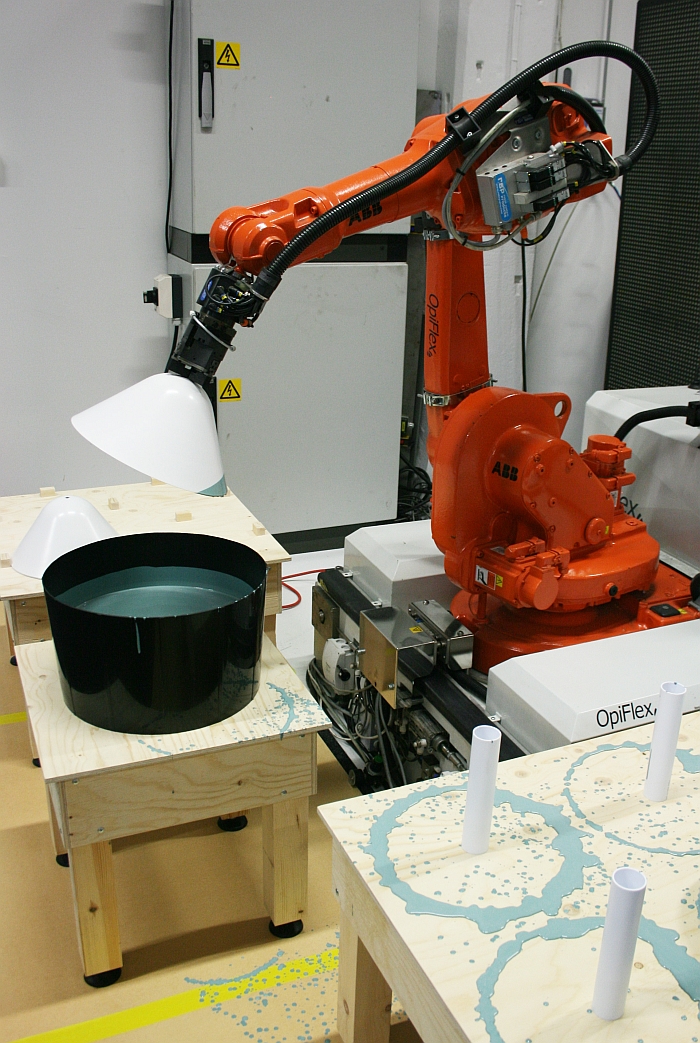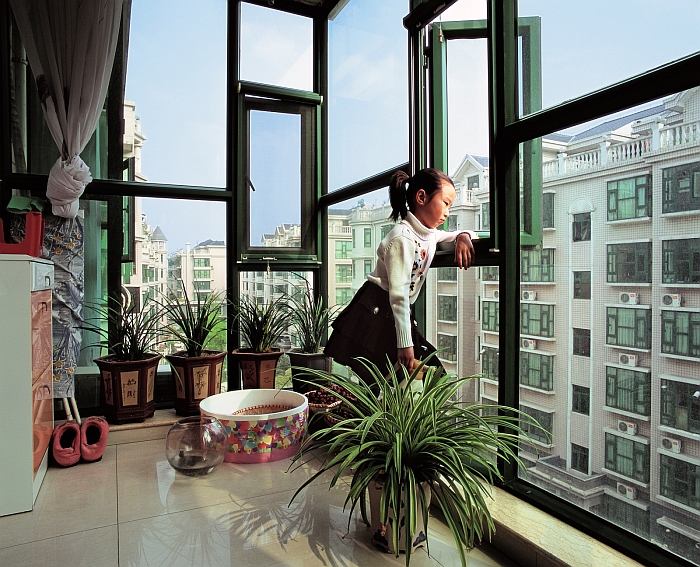5 New Design Exhibitions for January 2016
We know. We know.
It’s January. Everyone just wants to sit at home feeling poor, fat and unloved…….
Much more productive, and rewarding, would be a visit to an architecture and design exhibition, here five new exhibitions opening in January 2016 which particularly caught our attention.
“The Inhuman Factor” at Falkenberg Museum, Falkenberg, Sweden
If we’re completely honest we have no idea where Falkenberg is. Or at least didn’t. We’ve checked. It’s a little bit south of Gothenburg. On the coast. Looks idyllic. And despite its relative isolation Falkenberg Museum regularly present interesting design exhibitions, such as the forthcoming The Inhuman Factor. In recent years many designers have developed projects which have celebrated the imperfect as an antipode to the charmless repeated perfection that arises from automated mass industrial production. There is therefore a delicious inevitability about Stockholm based designers Mattias Karlsson and Erik Björk’s idea to programme a robot to work imperfectly. Randomly. Of making the robot a tool for analogue craft production. Does that work? Is that possible? The exhibition promises to provide a detailed assessment. And regardless of the end results we’re absolutely certain Wilhelm Wagenfeld would have loved the idea. And that’s always important.
The Inhuman Factor opens at Falkenberg Museum, Skepparesträtet 2, 311 74 Falkenberg on Saturday January 30th and runs until Sunday May 15th
“Anonymats d’aujourd’hui” at Le Musée de l’Elysée, Lausanne, Switzerland
The anonymity of the city is a much loved motif in music, film and literature, but what does it mean to be “anonymous” in a contemporary city, in how far can anonymity help individuals maintain their individuality and what does the anonymity of the contemporary city mean for future social evolution. Such, and similar, questions form the background to the Le Musée de l’Elysée’s major winter/spring exhibition. Promising works from a wide range of photographic genres Anonymats d’aujourd’hui will seek to provide a comprehensive exploration and analysis of contemporary urban anonymity.
Anonymats d’aujourd’hui opens at Le Musée de l’Elysée, 18, avenue de l’Elysée, 1006 Lausanne on Wednesday January 27th and runs until Sunday May 1st.
“RADIO Days. Tube Radios, Design Classics, Internet Radio” at the Museum für Angewandte Kunst Cologne, Germany
While many thought that video had killed the radio star, as a medium it was still to have its finest hour. Yes, we can quote pop and rock songs about radios for hours. Although television may have captured the imagination radio remains one of the most charming and enduring of mediums and in our digital age with the possibilities of internet radio is as relevant and important as it ever was. Celebrating the majesty of the radio the MAKK exhibition promises a chronological journey through the radio age(s) with objects from, amongst others, Norman Bel Geddes, Achille & Pier Giacomo Castiglioni, Ray & Charles Eames, Dieter Rams and Philippe Starck.
RADIO Days. Tube Radios, Design Classics, Internet Radio opens at the Museum für Angewandte Kunst, MAKK, An der Rechtschule, 50667 Cologne on Tuesday January 19th and runs until Sunday June 5th

Wega Stereobar 3300 by Verner Panton for Wega Radio (Photo © Saša Fuis Photographie, Köln, Courtesy of MAKK)
“D’Zair Art and Craft A Johannesburg” at the Museum of African Design, Johannesburg, South Africa
2015 saw an awful lot of exhibitions focussing on “African” design, architecture and art. For us the majority of them were uninteresting: we refuse to accept that one can in any way comprehensively “focus” on what is happening in a continent. At best one can present a few examples of works by a few individuals, invariably those shouting the loudest or with the correct connections. Eventually these selected studios become the “defining” examples of African design/art/architecture and a self-fulfilling prophesy is reached. We don’t doubt for a minute that interesting developments are taking place in Africa: just as interesting developments are taking place in Europe, Asia, North America et al. As such country specific exhibitions appear to us to be the more useful entry point for all who, like us, are largely unfamiliar with contemporary African design. Under the title D’Zair Art and Craft the Museum of African Design is presenting works by 13 contemporary designers from Algeria. It may just be the loudest shouting, best connected 13 Algerian designers, but thanks to the geographic restriction one should be able to root out those riding on the coat-tails of others.
D’Zair Art and Craft A Johannesburg opens at the Museum of African Design, 281 Commissioner Street, Johannesburg 2094 on Thursday January 28th and runs until Sunday April 3rd
“Japanese modern decorative and applied arts” at the Museum of Decorative Arts and Design, Riga, Latvia
As we’ve often noted, traditional Japanese crafts have along had a major influence outwith the island’s shores: international modernist architecture, for example, was greatly influenced by traditional Japanese architecture, or slightly earlier the Art Nouveauists were huge admirers of Japanese motifs and forms. A large part of the fascination with Japan arose from the the country’s self imposed isolation from the 1630s until 1853 under the so-called Sakoku policy. Having had no access to Japan for some 200 years it is little wonder that Europeans, Americans, and of course Japan’s nearer neighbours, were keen to find out about the land, people and traditions. Having opened up to the outside world Japan has obviously become affected by external influences, remains however, as with us all, essentially true to itself. Under the title Japanese modern decorative and applied arts the Riga Museum of Decorative Arts and Design is presenting an exhibition of contemporary craft objects from Japan which are intended to form the basis of a brief exploration of the influence of both domestic and foreign traditions on contemporary Japanese crafts.
Japanese modern decorative and applied arts opens at the Museum of Decorative Arts and Design, Skārņu iela 10/20, Riga, Latvia on Wednesday January 13th and runs until Sunday February 7th
Tagged with: cologne, Falkenberg, Johannesburg, Karlsson and Björk, köln, Lausanne, MAKK, Museum für Angewandte Kunst Köln, Museum of African Design, Radio, Riga, Stockholm



